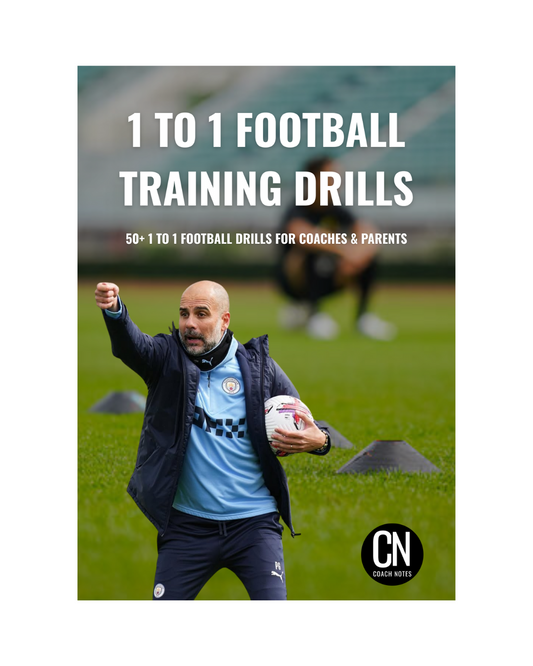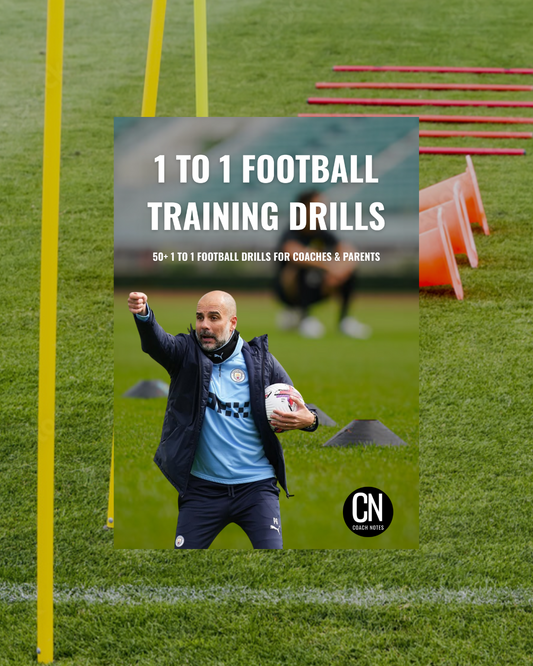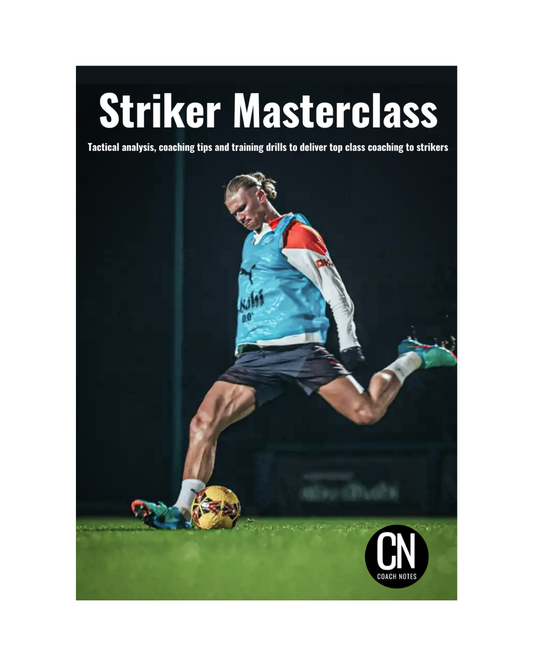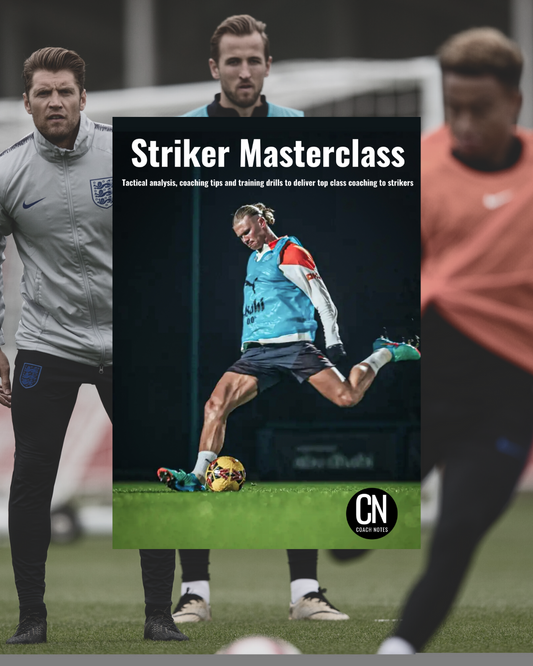
Kjetil Knutsen
Share
Kjetil Knutsen has emerged as one of the most innovative football managers in Europe, transforming FK Bodø/Glimt from a modest Norwegian club into a formidable force on both domestic and international stages. His tactical acumen, emphasis on fluid attacking play, and solid defensive structures have earned him accolades and respect in the football community. This blog delves into Knutsen's background, coaching philosophy, tactical approaches, and the valuable lessons coaches can glean from his methodologies.
Background: Clubs Coached and Trophies Won
Born on October 2, 1968, in Arna, Bergen, Norway, Kjetil Knutsen began his managerial career with TIL Hovding in 1995, leading the team from the fifth tier to higher divisions over nine years. He then served as head of first-team development at Brann before taking on head coaching roles at Fyllingsdalen (2012–2013) and Åsane (2014–2016). In 2017, Knutsen joined FK Bodø/Glimt as an assistant coach and was promoted to head coach in 2018. Under his leadership, Bodø/Glimt achieved remarkable success:
- Eliteserien Titles: 2020, 2021, 2023, 2024
- Eliteserien Coach of the Year: 2019, 2020, 2021
- Kniksen's Honour Award: 2024
Notably, in 2021, Knutsen guided Bodø/Glimt to their first European group stage appearance, including a historic 6–1 victory over AS Roma.
General Coaching Philosophy
Kjetil Knutsen's coaching philosophy is rooted in fluidity, structure, and intelligent pressing, all underpinned by an unwavering commitment to player development and collective growth. He doesn’t simply instruct players where to stand—he teaches them to understand why they should be there. This intellectual approach to the game is visible in Bodø/Glimt’s seamless movements and synchronised patterns across all phases of play.
Knutsen's teams are built on mutual trust, tactical awareness, and freedom within structure. Rather than rigid positional play, he encourages what he calls "automated variation”—players are drilled to know when to rotate, when to stay, and how to read triggers in real-time. His football is not possession for the sake of aesthetics—it’s purposeful possession, always with an eye on progression and exploitation of space.
Central to his philosophy is also a strong culture of humility and discipline. At Bodø/Glimt, he cultivated a squad ethos where no individual is bigger than the collective, creating a team of thinkers and workers—technically skilled, mentally resilient, and tactically astute.
In Possession and Offensive Transition: Shapes and Tactical Ideas
Knutsen's approach in possession is characterised by precision, flexibility, and overloads, primarily through a 4-3-3 or 4-2-3-1 base shape. His teams build from the back with intelligent rotation and vertical intent, ensuring that progression through the thirds happens systematically but fluidly.
Key Ideas:
- Structured Build-Up with Positional Freedom - During early build-up, centre-backs split wide and the #6 (pivot) drops in to form a temporary back three, creating overloads against opposition presses. Full-backs either stay deep or invert depending on the shape of the opposition, allowing for varied progressions.
- Inverted Full-Backs for Central Overload - One full-back inverts into the half-space, forming a double pivot, while the opposite side overlaps high and wide. This creates a 3-2-5 attacking structure, offering width and depth simultaneously. The inverted full-back provides an extra line-breaking option in midfield while also acting as a press-baiting outlet.
- Vertical Passing and Third-Man Runs - The midfielders and forwards are drilled in third-man combinations, receiving in pockets, laying off, and spinning into advanced areas. The ball is constantly played with vertical intent, not through hopeful long balls but calculated line-breaking passes.
- Rapid Offensive Transitions - Upon winning the ball, Knutsen’s teams transition at pace with direct passing to wingers or advanced midfielders. The objective is to catch the opponent before they regain shape, with numerical superiority in wide zones key to exploiting these moments.
Out of Possession and Defensive Transition: Shapes and Tactics
Knutsen’s defensive system is a masterclass in compact pressing, structured lines, and proactive recovery. While his teams are aggressive out of possession, they’re never chaotic. The pressing is coordinated, measured, and effective.
Defensive Organisation:
- Mid-to-High Block Pressing - The team often begins defending from a mid-block in a 4-4-2 or 4-3-3, with compact spacing between lines. As the ball shifts wide or backward, pressing triggers are activated. The front three initiate pressure, supported by midfielders who anticipate second balls and cover central lanes.
- Zonal Compactness Over Man-Marking - Players don’t follow opponents into isolated areas. Instead, they stay zonally compact, forcing play into predefined pressing traps. This collective movement ensures that no single player is pulled out of position, maintaining defensive cohesion.
- High Line to Support Counter-Press - By maintaining a higher defensive line, the centre-backs stay close to midfielders, allowing for quick support in counter-press situations. This spatial compression makes it harder for opponents to play out after regaining the ball.
Defensive Transition:
- Immediate Counter-Pressing ("5-Second Rule") - Knutsen’s sides follow a principle similar to elite European pressing teams: if the ball is lost, the nearest 3–4 players press immediately for five seconds to either win the ball back or delay the opponent. This intense counter-pressing moment prevents clean transitions and ensures the team can reset their shape.
- Collective Recovery Behind the Ball - If the first press fails, the team drops rapidly into a compact block. Midfielders and wingers retreat centrally, compressing space and forcing the opponent wide. Full-backs tuck in, forming a narrow back four or five, depending on the situation. This retraction is fast and rehearsed, creating a suffocating mid-block that denies penetration and invites turnovers.
- Transitional Intelligence - Unlike reactive defending, Knutsen's defensive transitions are proactive and intelligent. Players are coached on anticipation—where the ball will land, how to double up on the receiver, and when to delay versus when to attack. This game intelligence is a hallmark of Bodø/Glimt’s rise and is reflected in how seldom they’re exposed on the break.
What Coaches Can Learn from Knutsen and Embedding His Ideas
Kjetil Knutsen’s rise isn’t just a success story—it’s a blueprint. He’s proven that methodology, detail, and cohesion can overcome financial or squad limitations. For coaches at any level, his principles are adaptable and highly coachable.
Develop Intelligent, Independent Players
Knutsen places huge emphasis on building football IQ. His players know more than their own role—they understand the collective function. This allows fluid rotations and trust-based systems to thrive.
Coaching Tip: Integrate "tactical walkthroughs" and video feedback into your weekly plan. Use freeze-frame moments to ask, “What should happen here and why?”
Master the Art of Rotations and Overloads
Rather than relying on static patterns, Knutsen builds flexible structures that respond to in-game situations. Overloads are constantly created through smart rotations and well-timed runs.
Coaching Tip: Use 6v4 or 7v5 overload drills in wide areas, encouraging movement triggers such as overlaps, underlaps, and third-man combinations.
Embed a Collective Pressing Identity
Bodø/Glimt's pressing is unified, not chaotic. Pressing triggers are rehearsed, and every player knows when to press and how the rest of the team supports that action.
Coaching Tip: Define 2–3 pressing triggers for your team (e.g., back pass, poor first touch, or ball into the channel). Use small-sided games with bonus points for winning the ball in designated zones.
Use Simplicity to Achieve Sophistication
Knutsen simplifies complex systems into teachable moments. His style might look intricate, but it’s drilled through repetition, clarity, and consistent principles. It's about knowing when to rotate, when to hold position, and how to respond to the opponent.
Coaching Tip: Build a weekly cycle where one day is focused on structure (shape, spacing), one on transition (both phases), and one on repetition under pressure (game-speed scenarios).
Create a Strong Culture Behind the Tactics
Knutsen’s success isn't just tactical—it’s cultural. He’s built a humble, unified environment where players buy into the vision. They don’t play for themselves—they play for each other.
Coaching Tip: Set behavioural standards, not just tactical expectations. Build a culture where communication, effort, and humility are non-negotiables.
Final Note
Kjetil Knutsen’s impact at Bodø/Glimt goes beyond trophies—he’s redefined what a unified, tactically flexible, and culturally strong football team looks like. For coaches looking to grow their teams with modern, intelligent football, Knutsen’s model is one of the most accessible and inspiring blueprints in the game today.









